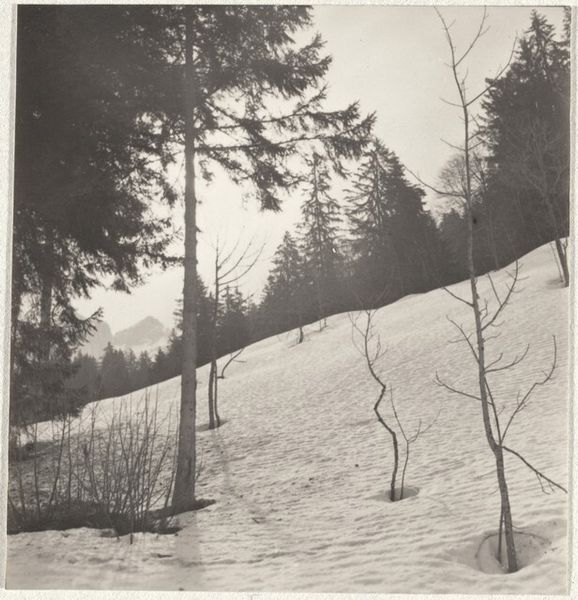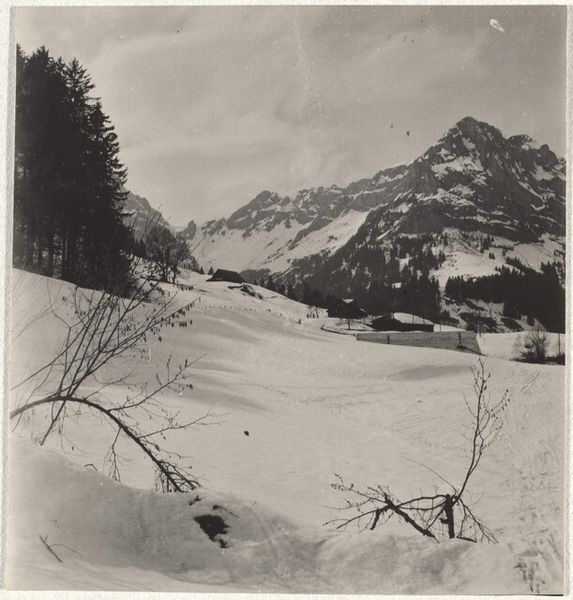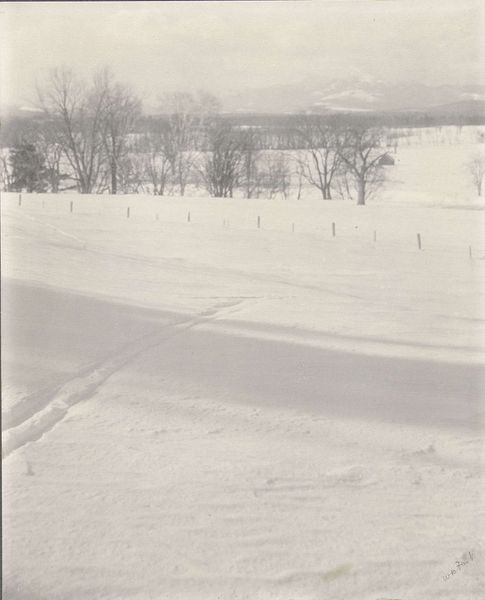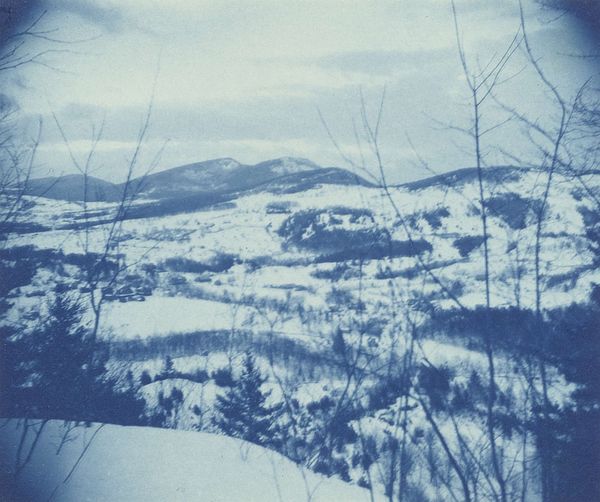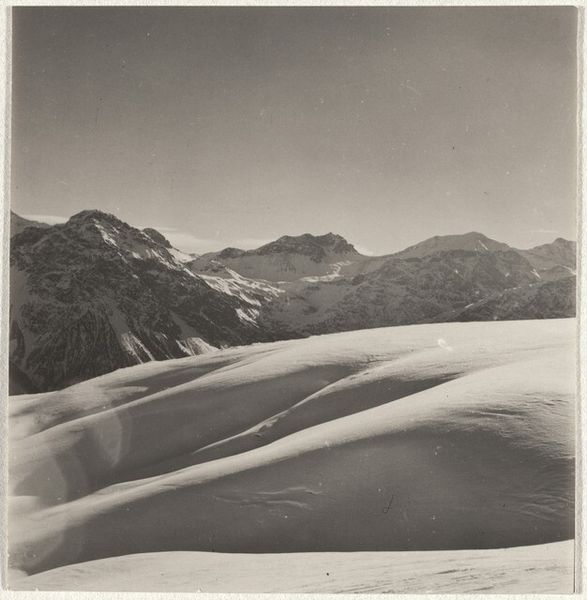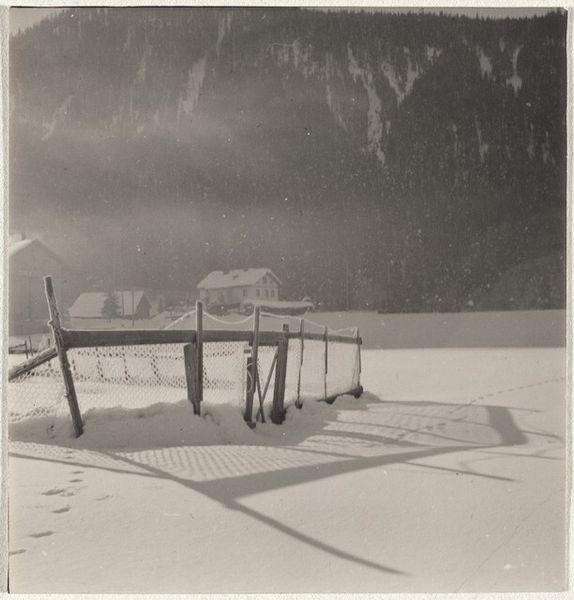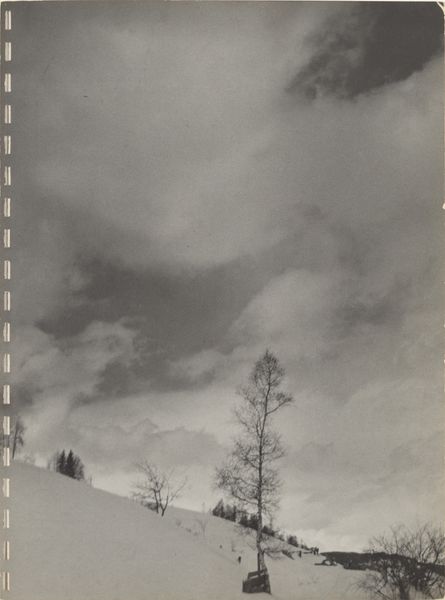
print, photography, gelatin-silver-print
# print
#
landscape
#
photography
#
gelatin-silver-print
#
modernism
#
realism
Dimensions: sheet (trimmed to image): 5.7 x 5.5 cm (2 1/4 x 2 3/16 in.)
Copyright: National Gallery of Art: CC0 1.0
Curator: This photograph, "Tree in snow--Landscape," was taken by Robert Frank sometime between 1941 and 1945, and is a gelatin silver print. Editor: There's such quiet desolation here, isn't there? The high contrast in the silver print emphasizes the snow’s stark whiteness against the dark branches, really focusing on a landscape transformed, even muted, by the materials. Curator: I agree. The picture definitely communicates that feeling through this composition. Robert Frank, though initially celebrated for his raw portrayal of America in the 50s, here offers an earlier glimpse into his evolving social sensibility within postwar landscapes and their shifting cultural status. The deliberate manipulation in the darkroom during the printing process creates a stark, unsettling realism. Editor: Exactly, it is interesting to consider the process, using the gelatin silver to build not only a surface, but the very scene. You can feel the artist working directly with the chemicals and paper to control light and shadow. Frank transforms what could be just a pretty snow scene into an image that questions its context and makes you wonder about that location’s specific history and usage. What communities and resources might define it? Curator: And you know, Frank’s attention to those stark material contrasts invites us to think about photography's shifting place in high art during that period. It wasn’t quite regarded as the art form it is now. The technical aspects of printmaking also held different societal connotations. Editor: The limitations inherent in gelatin silver printing, the tonal range, the textures – they almost dictate the mood of isolation. You can really imagine Frank, as an apprentice maybe, toiling over this in the darkroom. Was he experimenting, rebelling against any rules in place in these types of landscape scene setting? Curator: Yes! I'd say his background played a role. His personal history growing up during World War II in Switzerland definitely informed this aesthetic choice. Seeing Europe rebuilding informs his attention to specific place. Editor: Considering the limitations and affordances of materials and method, Frank achieves such stark intimacy. I will now forever feel that the landscape has been considered so carefully to tell its story and its production's story at once. Curator: Right. It shows us how the weight of societal pressures shape both artist and art piece, and I can see the historical events in this approach to nature, now more than ever.
Comments
No comments
Be the first to comment and join the conversation on the ultimate creative platform.
